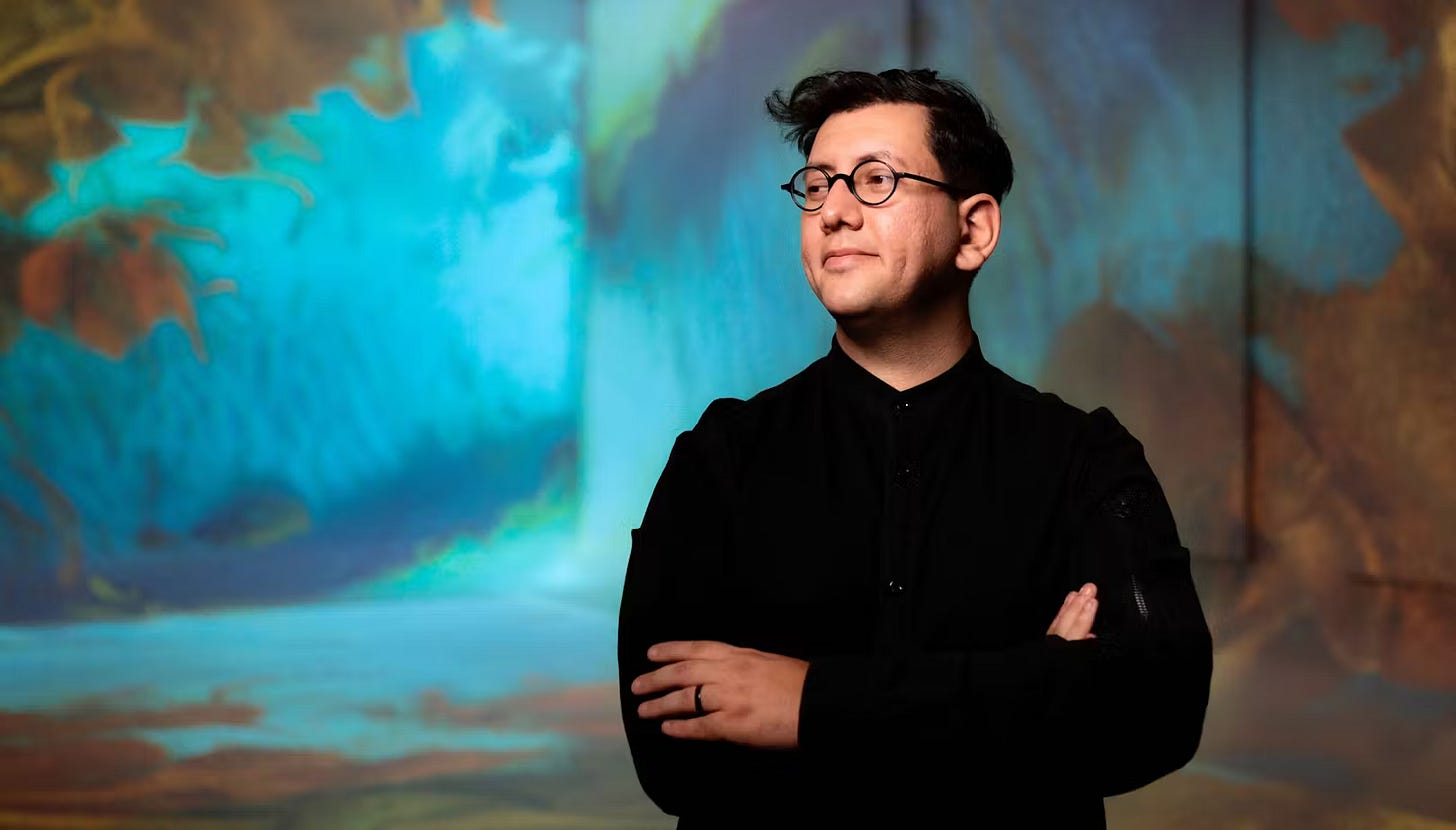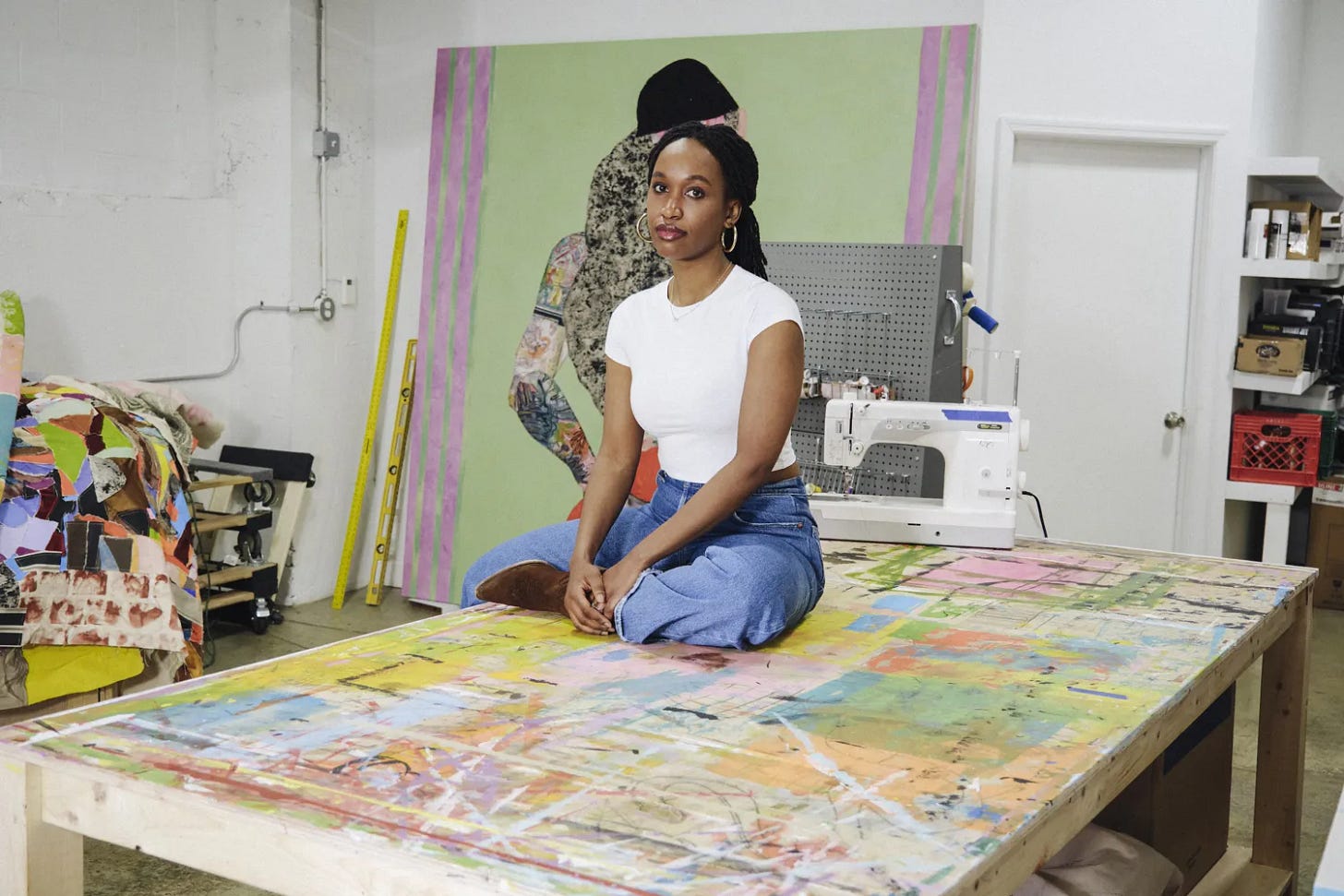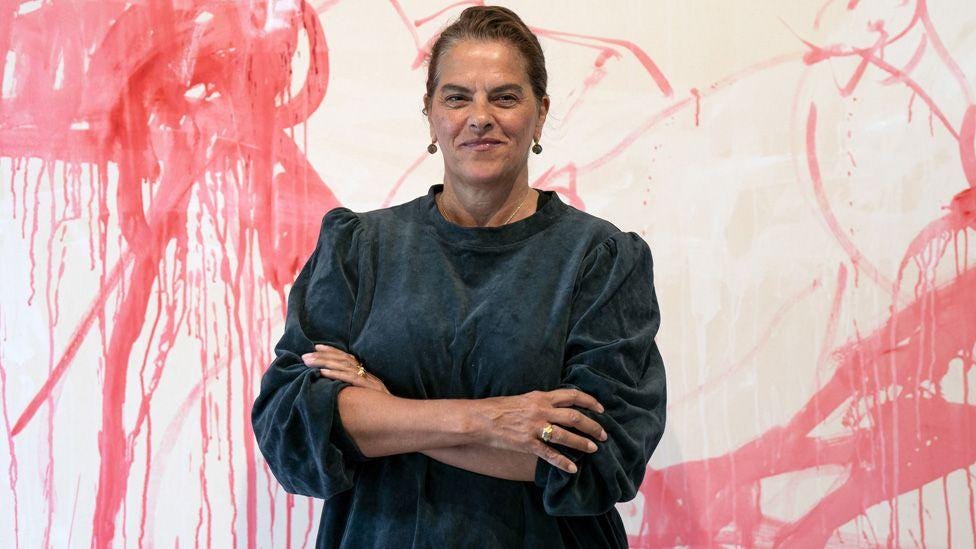Part IV: The Battle Over Meaning: Art, Identity, and Power - THE ART BYSTANDER INTELLIGENCE: The 80 Most Powerful Players in the Global Art Market
Who Shapes the Future of the Art World - By Roland-Philippe Kretzschmar, Founder & Editor-in-chief The Art Bystander
Part I spotlighted the market power players—gallerists, private advisers, and collectors—who drive demand, set prices, and shape artistic careers behind the scenes.
Part II mapped the shifting institutional landscape, where museums, biennials, and emerging cultural platforms compete to define the canon and claim relevance in a rapidly evolving art world.
Part III dived into the cultural power brokers—critics, writers, curators, and thinkers—who shape meaning, spark discourse, and influence how art is understood across borders.
Part IV turns inward—to the artists themselves. These are the meaning-makers, the symbolic architects, the figures who encode identity, politics, and myth into visual form. In an age of fragmented truths and contested histories, they shape what art is allowed to mean—and whose stories get told.
IV. CULTURAL ZEITGEIST — WHO SHAPES MEANING
The Battle Over Meaning: Art, Identity, and Power
What is art allowed to mean in 2025—and who gets to decide? In today’s dispatch, we explore how artists, curators, and institutions are negotiating identity, trauma, heritage, and ideology in an era of contested truth. From symbolic acts of resistance to the commodification of personal narratives, we examine the figures shaping how art expresses—and manipulates—meaning in a fractured world. This is the battleground for the soul of culture.
Digital Pioneers & AI Visionaries
These artists are at the forefront of integrating technology into artistic practice, redefining the very nature of creation and consumption.
Refik Anadol: Continues to transform algorithms into breathtaking, monumental architecture. His large-scale data sculptures don't just visualize AI; they immerse audiences in public trances, drawing canonizing attention from MoMA, LACMA, and Venice. Following his Davos installations on glaciers, expect his "Large Nature Model" to fuel more expansive, data-driven sensory experiences, pushing AI art into new public and ecological dialogues.
Sougwen Chung: Orchestrates profound human-robot symbiosis in her evolving drawing practice. Her work—a potent blend of ritual and computation—increasingly posits human-machine collaboration as a new form of consciousness. After a busy period with events across Art Basel and VRHAM!, and her book "Ecologies of Becoming," Chung is poised to deepen her exploration of robotic sentience and biomimetic art in major installations.
Mario Klingemann: The AI art world's foundational trickster. Klingemann’s uncanny, glitch-infused figures relentlessly challenge our perceptions of beauty, memory, and mortality as processed by machines. His ongoing influence, particularly through projects like "Botto" (a decentralized autonomous artist), continues to redefine artistic agency and explore what happens when AI not only generates but also curates art.
Anna Ridler: Weaves intricate narratives from raw data. Her AI-generated works, spanning tulip mania, finance, and classification ethics, elevate machine learning into a poetic and incisive critique. With projects like "Breathings of the Moon" and "Every Single Iris on The Internet" recently announced or underway, Ridler is expected to expand her data-driven storytelling into more complex, multi-layered installations, addressing critical ethical questions around AI.
Casey Reas: Co-creator of Processing and the unseen architect of generative aesthetics. His profound influence extends from fundamental software to conceptual sculpture, coding the very backbone of digital artistic expression. His recent explorations in "conceptual software painting" hint at further innovations in bridging code-based abstraction with physical presence, influencing a new generation of computational artists.
Refik Anadol
Voices of Identity and Representation
These artists are at the vanguard of shaping narratives around identity, driving critical discourse and transforming institutional representation.
Artists challenging hegemonies, making space for the unseen and the misrepresented.
Simone Leigh: Turns Black womanhood into monument. Her terracotta and bronze sculptures evoke ancient forms, but speak urgently to the present—centering care, invisibility, and embodied sovereignty. Whether at the Venice Biennale or the High Line, her work reframes power through quiet scale, radical grace, and historical repair.
Zanele Muholi: Frames queer Black bodies with intimate defiance. Their self-portraits and community documentation function as both visual activism and living archive—each image a site of resistance, visibility, and soft armor against systemic erasure. Muholi’s lens is fierce, tender, and politically surgical.
Christina Quarles: Paints the in-between. Her fluid, fragmented bodies exist in warped spaces where skin, language, and perspective collapse. As a queer, biracial woman, she turns ambiguity into a visual politics—disrupting fixed categories and revealing identity as process, tension, and multiplicity.
Tschabalala Self: Collages the body as a battleground. She stitches fabric, paint, and cultural memory into exaggerated figures that confront the history of the gaze. Her women are bold, stylized, and unapologetically present—reclaiming Black femininity with surreal humor and mythic force.
Martine Gutierrez: Performs self as spectacle. In hyper-staged photographs and immersive installations, she casts herself as every role—model, muse, brand, deity. Her work dismantles beauty codes, colonial fantasy, and the commercial machinery of identity, offering seduction as a strategy of subversion.
Tschabalala Self in her studio. Photograph: Christian DeFonte
Cultural Icons & Legacy Innovators
Artists who command both critical reverence and market clout—merging emotional depth, institutional weight, and global visibility to shape the cultural mainstream.
These are the artists whose work transcends the white cube. They shape the visual language of our time, move markets without pandering, and rewire collective memory. Each is a singular force—part myth, part movement—whose influence stretches from auction houses to public consciousness.
Olafur Eliasson: Architect of planetary imagination. His immersive environments—fog chambers, mirrored corridors, melting glaciers—transform perception into ethical experience. Blurring art, architecture, and science, Eliasson activates climate awareness not through didactics but through awe, inviting viewers into the elemental urgency of now.
Yayoi Kusama: Queen of infinite repetition. Her polka-dotted cosmos, phallic soft sculptures, and mirrored chambers are not just aesthetic signatures—they are expressions of psychic survival. Kusama’s lifelong hallucinatory visions have made her both myth and mirror, straddling avant-garde history and pop iconography with unmatched global reach.
Anselm Kiefer: Wields ash and lead like scripture. His alchemical canvases—scarred with straw, fire, and myth—excavate the ruins of European memory. Drawing on history, mysticism, and Wagnerian scale, Kiefer’s work remains one of the most uncompromising reckonings with war, guilt, and cultural collapse in the modern era.
Kehinde Wiley: Redraws the canon in full color. From the Obama portrait to stained-glass cathedrals, Wiley inserts Black and Brown subjects into the lineage of power, grace, and grandeur. With velvet baroque precision, he reclaims the visual architecture of dominance—and hands it back to the historically excluded.
Tracey Emin: Turns confession into high voltage. Her practice—spanning neon, painting, installation, and the wounded body—transforms personal trauma into cultural language. Emin’s voice is raw, unapologetic, and emotionally electric, making her one of the few artists to weaponize vulnerability at monumental scale.
Dame Tracey Emin.
Global Cultural Catalysts
These artists, from diverse geographies, are defining new aesthetics, sparking global dialogue, or representing significant shifts in cultural production and influence.
KAWS (Brian Donnelly): More successfully than almost any contemporary artist, KAWS bridges the realms of fine art, commercial design, and global pop culture. His iconic figures—Companion, BFF, and Chum—circulate as both sculptures in major museums and toys in mass markets. By collapsing the boundaries between streetwear, painting, and collectibles, he has created a new model of cultural capital that speaks to mass desire and elite taste simultaneously.
Adriana Varejão: Brazil’s foremost contemporary painter, Varejão’s practice excavates the wounds of colonialism through cracked tiles, visceral textures, and baroque illusion. Her works are both architectural and corporeal—blending Portuguese azulejo motifs with references to flesh, trauma, and historical violence. With deep institutional support and critical resonance, she is a pillar of post-colonial discourse in the Global South and beyond.
Wangechi Mutu: A major voice in global contemporary art, Mutu fuses African mythology, feminist theory, and Afrofuturist aesthetics into collages, sculptures, and hybrid creatures. Her work spans New York and Nairobi, critiquing the violence of representation while offering alternative cosmologies rooted in the feminine divine. From the MET façade to Venice pavilions, her influence reshapes how African diasporic futures are imagined.
Takashi Murakami: Master of the superflat, Murakami fuses Edo-era aesthetics with anime, luxury branding, and global commerce. His smiling flowers and Louis Vuitton collaborations are only the surface of a deeper strategy—one that critiques Western hegemony while exporting a distinctly Japanese cultural identity. Murakami’s studio is not just an atelier but a media empire, proving that commercial scale can coexist with cultural depth.
Anne Imhof: Germany’s most mythic contemporary artist, Imhof stages operatic performances where bodies become both sculpture and symptom. Her durational works—often set in glass cages or cold institutional spaces—merge music, subculture, fashion, and dread into a visceral experience of contemporary alienation. With landmark shows like Faust (Venice Biennale) and Sex (Tate), she continues to define the existential mood of a generation.
Anne Imhof
These are the meaning-makers—the coders of new aesthetics, the warriors of representation, the architects of emotional truth. Together, they’re not just shaping how art looks or feels—but how it functions in culture, politics, and technology.
But meaning alone doesn’t shape the future. Power does.
And the real question is: what comes next?
🛰️ In the next and final chapter of this series, I map the future architecture of global art power—a trend-driven intelligence forecast charting the shifts, signals, and seismic players redefining the landscape between now and 2028.
Dropping soon.







